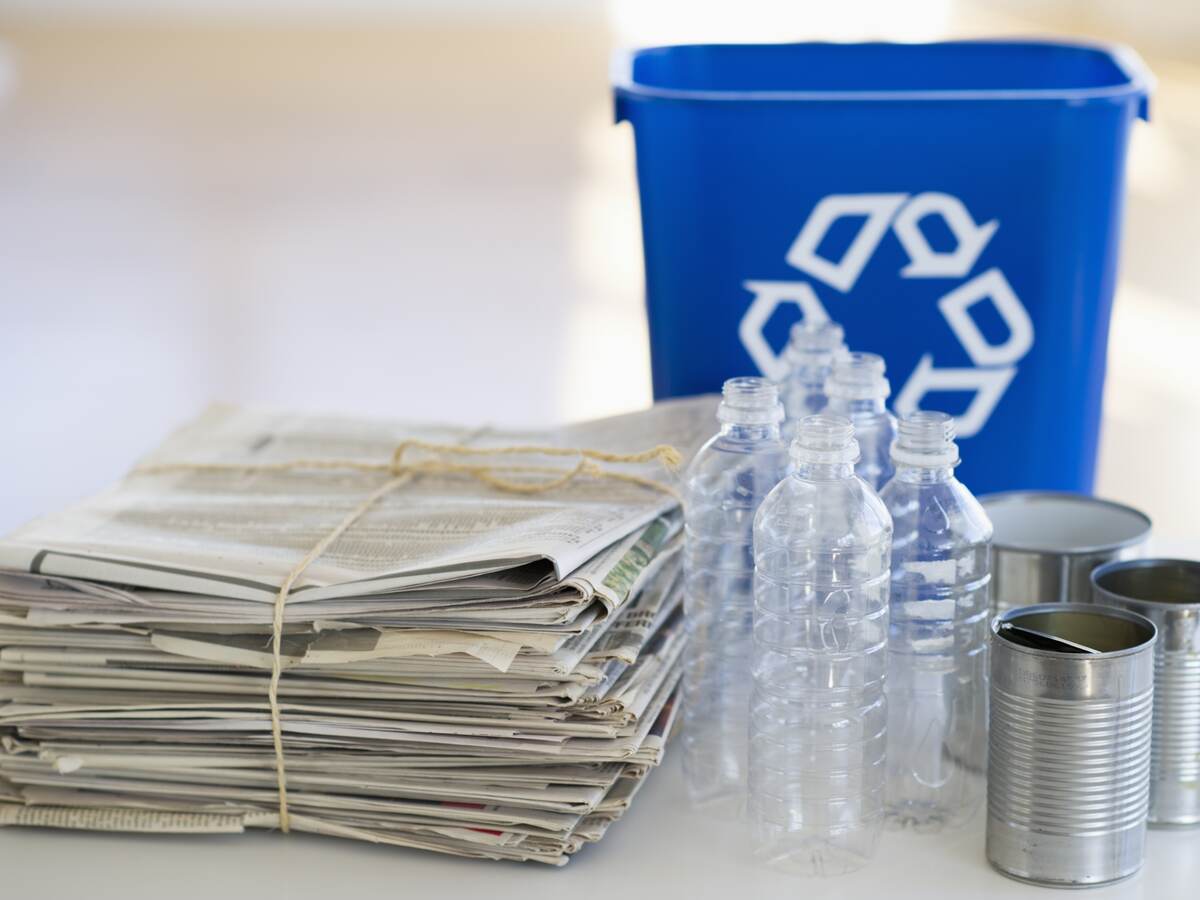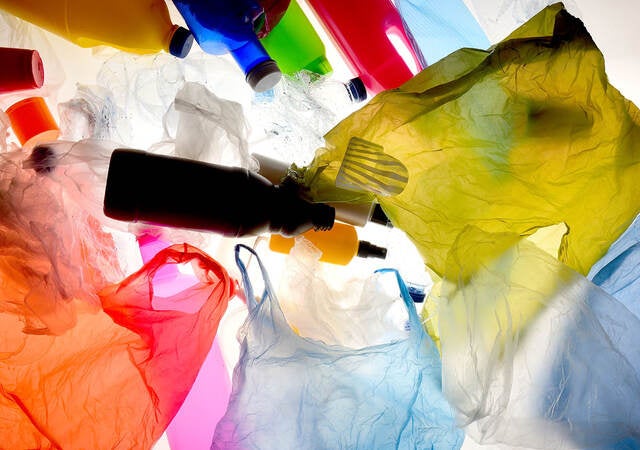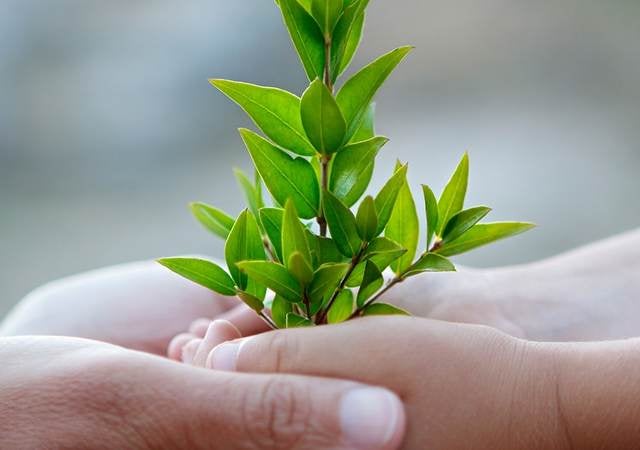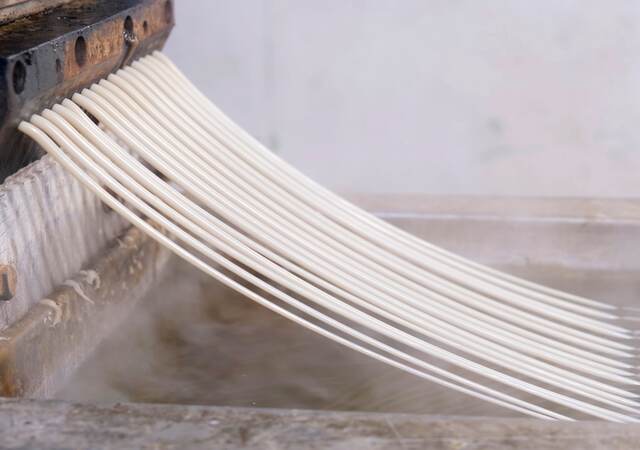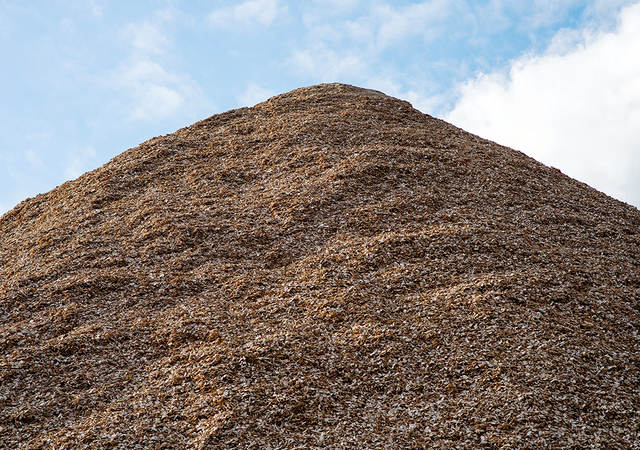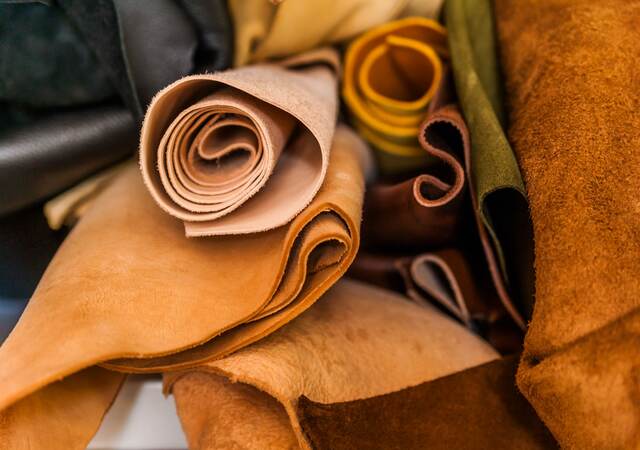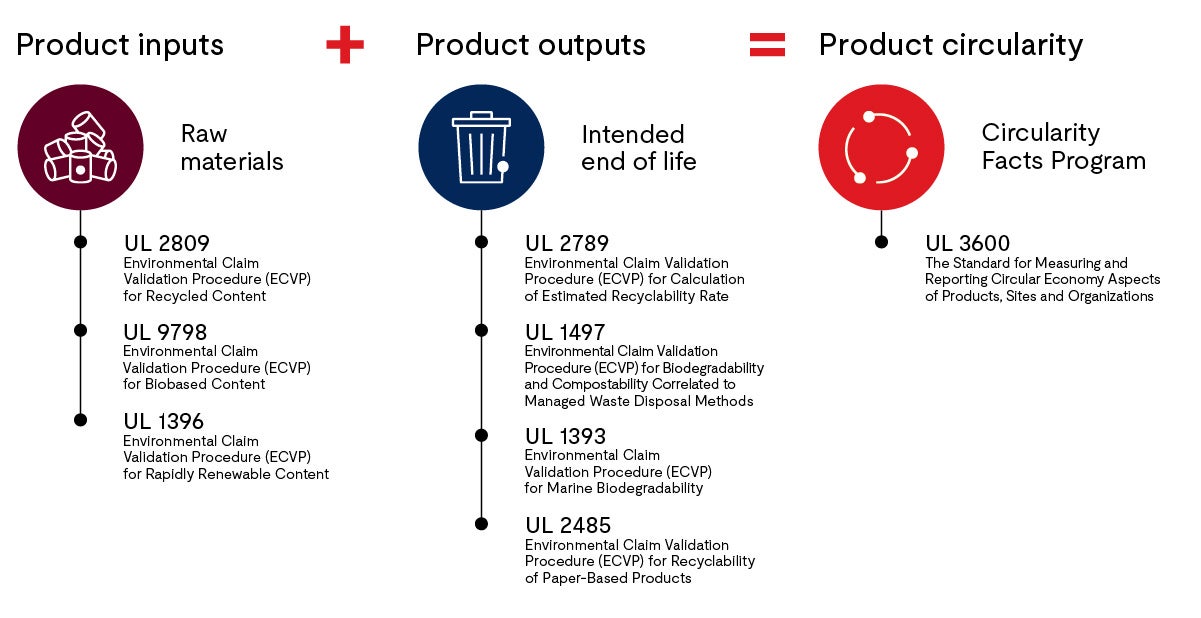
Understanding the circular economy
Circular products are one of three circular economy principles that will help humanity transition to a more environmentally prosperous future. Manufacturers and designers extend the useful life of a material or product and recover or repurpose it at end of life, evolving beyond products that would otherwise end up as waste. This effort boosts the value of the materials and products that manufacturers retain and reuse. A complete product life cycle will no longer end at the landfill, but will begin anew when materials are made into new products as part of their journey in the circular economy.
Product circularity takes many forms depending on the source of the materials (inputs) and how those materials impact the end of the product’s life (outputs). When considering a product’s circularity, UL Solutions separates the materials, or inputs, into two categories: technical or biological. Technical materials are those that do not come from the natural world; plastic is the most common technical material used today. At the end of their life, technical materials are broken down and recycled or repurposed into new products. Biological materials are the opposite of technical materials and are made from natural or biobased contents that, at the end of life, can biodegrade and return their nutrients back to the environment, either through composting or anaerobic digestion.
Defining the circularity of products
A first-of-its-kind way to measure product circularity

Differentiate by substantiating your product circularity with our Circularity Facts™ Program and UL 3600
UL 3600, the Standard for Measuring and Reporting Circular Economy Aspects of Products, Sites and Organizations, details a first-of-its-kind, industry-accepted way to measure product circularity and is the foundation of our Circularity Facts Program. By quantifying a product’s inputs and examining its end-of-life outputs, we can use the UL 3600 Standard to validate the product’s circularity and help demonstrate its commitment to a circular economy.

Furthermore, using established Environmental Claim Validations (ECVs), companies can select either the technical or biological track to validate circularity. Products are validated for their inputs and outputs to determine if they are designed to fit into the circular economy. Once validations have been achieved, our experts can quantify and measure the product’s circularity by combining its content and design to arrive at an overall circularity score.
Already have an ECV?
If your product or material already holds one or more ECVs that are part of either the technical or biological circularity track, we can further help you achieve a product circularity certification.
Why UL Solutions
UL Solutions, a world leader in safety science, can help you stand out. We work with manufacturers and suppliers of products such as cookware, toys, electronics, fashion, textiles and apparel to increase credibility by validating sustainability claims. Validated claims can help your customers trust that products and processes are as eco-friendly as you claim they are.
Get connected with our sales team
Thanks for your interest in our products and services. Let's collect some information so we can connect you with the right person.

